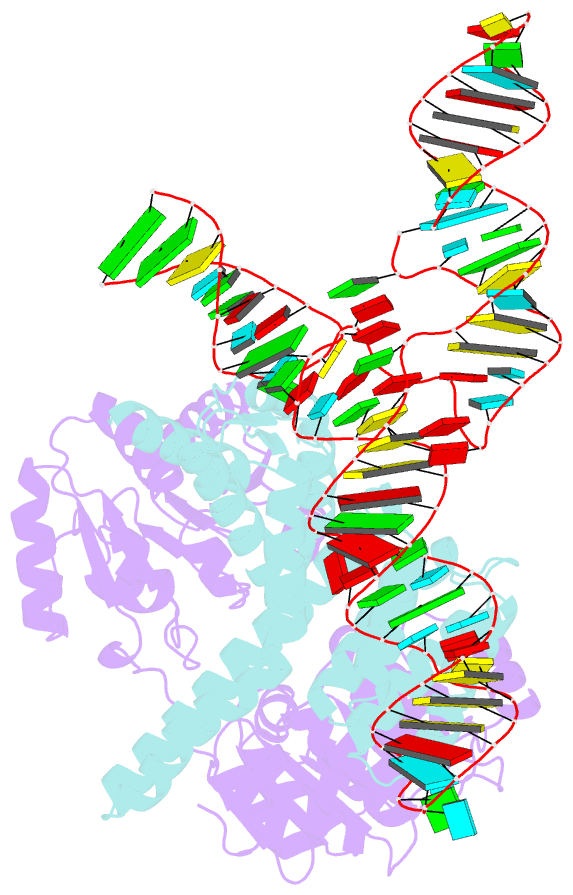Summary information and primary citation
- PDB-id
- 8huj; SNAP-derived features in text and JSON formats;
DNAproDB
- Class
- translation
- Method
- cryo-EM (3.76 Å)
- Summary
- cryo-EM structure of the j-k-st region of emcv ires in complex with eif4g-heat1 and eif4a
- Reference
- Imai S, Suzuki H, Fujiyoshi Y, Shimada I (2023): "Dynamically regulated two-site interaction of viral RNA to capture host translation initiation factor." Nat Commun, 14, 4977. doi: 10.1038/s41467-023-40582-6.
- Abstract
- Many RNA viruses employ internal ribosome entry sites (IRESs) in their genomic RNA to commandeer the host's translational machinery for replication. The IRES from encephalomyocarditis virus (EMCV) interacts with eukaryotic translation initiation factor 4 G (eIF4G), recruiting the ribosomal subunit for translation. Here, we analyze the three-dimensional structure of the complex composed of EMCV IRES, the HEAT1 domain fragment of eIF4G, and eIF4A, by cryo-electron microscopy. Two distinct eIF4G-interacting domains on the IRES are identified, and complex formation changes the angle therebetween. Further, we explore the dynamics of these domains by using solution NMR spectroscopy, revealing conformational equilibria in the microsecond to millisecond timescale. In the lowly-populated conformations, the base-pairing register of one domain is shifted with the structural transition of the three-way junction, as in the complex structure. Our study provides insights into the viral RNA's sophisticated strategy for optimal docking to hijack the host protein.





